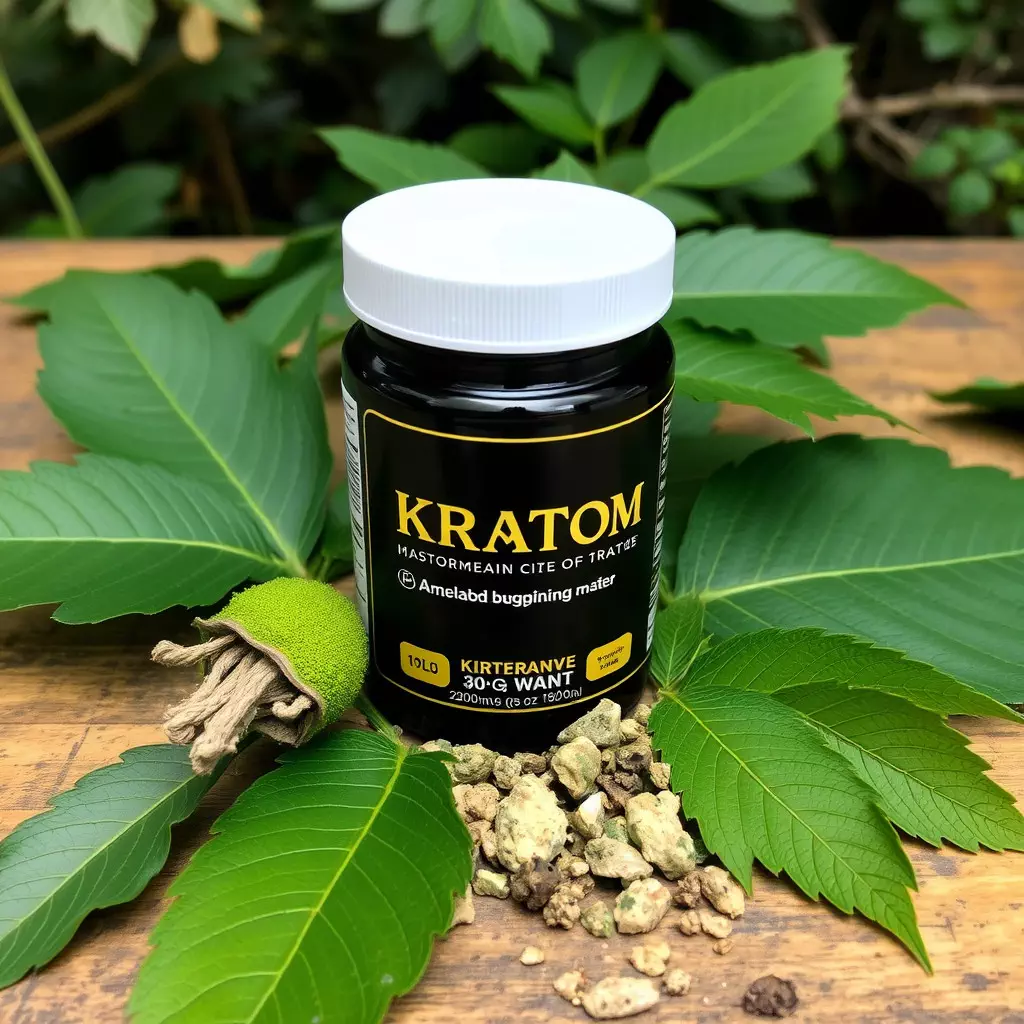Kratom, originating from Southeast Asia, has garnered attention as a natural option for joint pain relief due to its alkaloids, mitragynine and 7-hydroxymitragynine. These compounds are believed to interact with opioid receptors to potentially provide analgesic effects by regulating pain transmission through the nervous system. User experiences suggest relief from joint discomfort, and research indicates anti-inflammatory and analgesic properties that could benefit those with chronic conditions like arthritis or osteoarthritis. However, it is crucial to consult healthcare professionals before using kratom due to individual differences in efficacy and safety, the impact of dosage, and the necessity for personalized medical advice. Legal status also varies by region, making it essential to be aware of local regulations. Kratom should be considered as part of a comprehensive treatment plan and used responsibly, with caution regarding interactions with other medications, side effects, and purchasing from reliable sources to ensure quality and purity. Regular monitoring of pain levels and health is necessary for optimal use. Joint pain relief with kratom can be a viable option when approached with due diligence and professional guidance.
Exploring the natural pathways to joint pain relief, “Performance Enhancement with Kratom” delves into the potential of kratom as a viable option for those seeking alternative methods. This article provides a comprehensive examination of how kratom can be harnessed for its analgesic properties, offering readers an informed perspective on its use for joint pain relief. From deciphering the biological mechanisms behind its effects to integrating it into your health regimen with caution and clarity, each section is crafted to enlighten and guide. Join us as we navigate the intersection of herbal remedies and performance enhancement, highlighting the promising role kratom may play in attaining joint pain relief.
- Unlocking the Potential of Kratom for Joint Pain Relief: An Overview
- Understanding Kratom's Mechanisms for Natural Joint Pain Alleviation
- Integrating Kratom into Your Health Regimen Safely and Effectively for Joint Pain Relief
Unlocking the Potential of Kratom for Joint Pain Relief: An Overview

Kratom, a tropical evergreen tree native to Southeast Asia, has garnered attention in natural medicine circles for its potential role in joint pain relief. The active compounds found in kratom leaves, known as mitragynine and 7-hydroxymitragynine, are believed to interact with the body’s opioid receptors, providing analgesic effects. These alkaloids may help alleviate the discomfort associated with joint issues by modulating pain signals within the nervous system. Users reporting joint pain relief from kratom often cite specific strains such as Maeng Da and Bali, which are known for their pain-relieving properties. It’s important to approach the use of kratom cautiously, as its efficacy and safety profile can vary among individuals and may be influenced by dosage and strain potency.
Research into kratom’s effects on joint pain is ongoing, with some studies suggesting that it may offer a natural alternative to traditional pharmaceuticals for those seeking relief from joint discomfort. The anti-inflammatory and analgesic qualities of kratom could be beneficial for managing chronic joint conditions like arthritis or osteoarthritis. However, it’s crucial for individuals considering kratom as a treatment option to consult with healthcare professionals, given the complexity of joint pain and the need for personalized medical advice. Additionally, users should be aware of the legal status of kratom in their jurisdiction, as it is subject to varying regulations across different regions.
Understanding Kratom's Mechanisms for Natural Joint Pain Alleviation

Kratom, a plant native to Southeast Asia, has been traditionally used for its various health benefits, one of which includes joint pain relief. The mechanisms behind kratom’s potential for alleviating joint pain are multifaceted and involve the complex interaction with the body’s neurotransmitter systems. Alkaloids found in kratom, chiefly mitragynine and 7-hydroxymitragynine, are thought to influence the central nervous system by binding to opioid receptors. This binding can modulate pain signals, potentially reducing the sensation of joint pain. Additionally, these alkaloids may also exert anti-inflammatory effects, which could further contribute to joint pain relief with kratom. The anti-inflammatory action is believed to be mediated through the inhibition of certain inflammatory cytokines and enzymes, thereby reducing the inflammation that often accompanies joint conditions.
Furthermore, the analgesic properties of kratom may provide relief from chronic or acute joint pain by affecting the brain’s interpretation of pain. Users report a sense of numbness or reduced sensation to painful stimuli after kratom consumption, which can be attributed to its effects on mu, delta, and kappa opioid receptors. This dual action of both reducing inflammation and altering pain perception makes kratom a compelling natural alternative for individuals seeking joint pain relief. However, it is crucial to approach the use of kratom with caution, as it can interact with other medications and may have side effects. Therefore, anyone considering kratom for joint pain should consult with a healthcare professional to ensure safe and effective use.
Integrating Kratom into Your Health Regimen Safely and Effectively for Joint Pain Relief

When considering natural alternatives for joint pain relief, kratom has emerged as a potential option due to its alkaloid profile, which includes mitragynine and 7-hydroxymitragynine. These compounds are believed to interact with the body’s opioid receptors, potentially offering analgesic effects that can help manage joint discomfort. To integrate kratom into your health regimen safely and effectively for joint pain relief, it is crucial to approach its use with caution and informed decision-making. Begin by consulting with a healthcare provider to discuss the potential benefits and risks associated with kratom, as well as how it may interact with any other medications or supplements you are taking. It’s important to start with a low dosage to gauge your body’s response and avoid adverse effects. Additionally, the quality and purity of kratom products can vary significantly, so sourcing kratom from reputable vendors is essential for ensuring safety and efficacy. Regular monitoring of your pain levels and overall well-being will help you fine-tune your dosage and frequency for optimal joint pain relief. Always adhere to the recommended guidelines and dosing instructions specific to the kratom strain or product you are using, and be mindful of any changes in local laws regarding kratom use. By incorporating kratom into your health regimen with due diligence and professional guidance, it can serve as a complementary approach to traditional treatments for joint pain relief.
Kratom presents a promising avenue for individuals seeking natural joint pain relief. The mechanisms by which kratom can alleviate discomfort are multifaceted, as discussed in this article. By incorporating kratom into one’s health regimen judiciously and with professional guidance, the potential for improved quality of life without relying solely on conventional medications is a significant advancement. It is imperative to approach the use of kratom with caution due to its potency and the need for further research to fully understand its effects and interactions. Nonetheless, for those exploring alternative methods for joint pain relief, kratom merits consideration as part of a comprehensive approach to managing joint-related discomfort.






